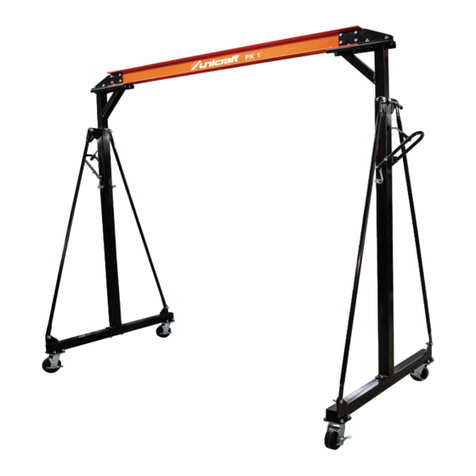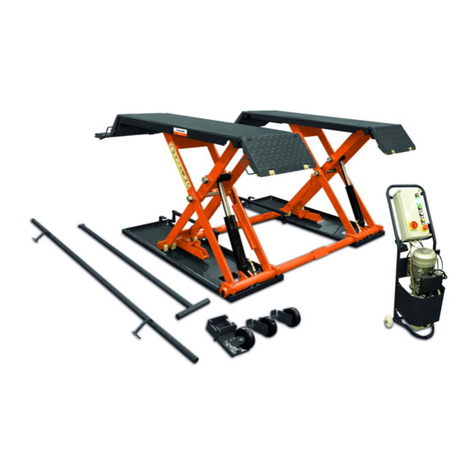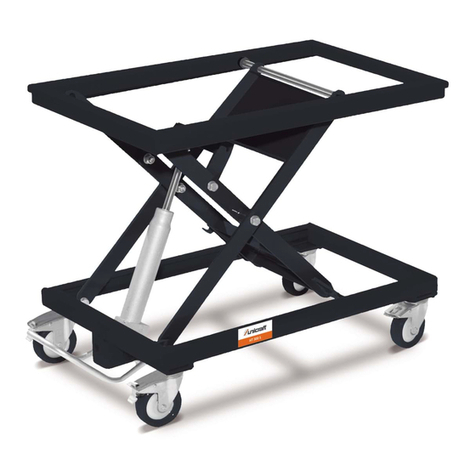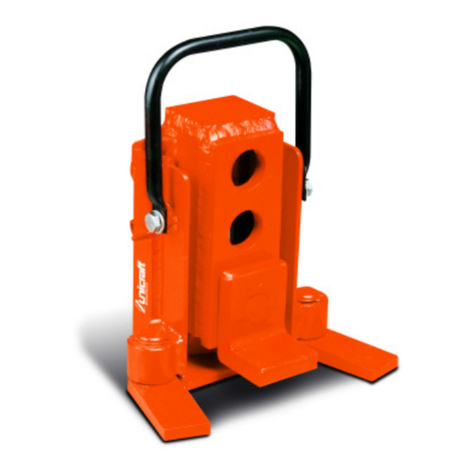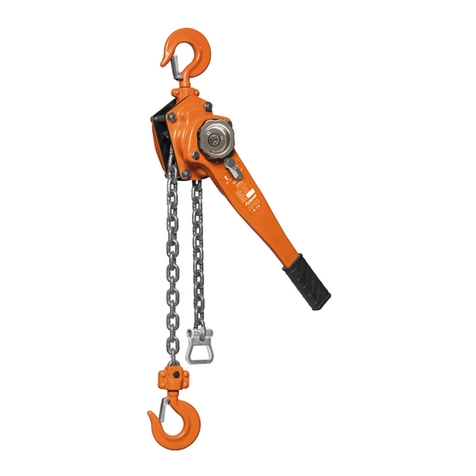
6K-Series | Version 1.03
Intended use
It is important to point out that the making of any unau-
thorised modifications or changes to the machine is not
permitted.
Operating personnel must always ensure that the maxi-
mum load is never exceeded.
Personnel must not stand underneath a suspended load
as this could come loose and fall.
Personnel must not ride on or be lifted by the equip-
ment. Access to lifting equipment is not permitted.
2.6 Safety information for operating personnel
No operational mode which could compromise the
safety of the chain hoist may be undertaken.
It is the responsibility of the operator to ensure that no
unauthorised personnel work on the chain hoist (e.g.
also by working on equipment in a manner contrary to
authorised use).
It is the responsibility of the operator to check the chain
hoist at least once before use (once a day) for externally
apparent damage or defects and to report any changes
(including to the way the machine is operating) which
are likely to compromise safety.
It is the responsibility of the operator to ensure that the
the chain hoist is operated only in perfect order and
condition.
It is the responsibility of the operator to insist that oper-
ating personnel must wear protective clothing wherever
necessary.
Under no circumstances must safety devices be re-
moved or put of operation (potential risk of serious
crushing, danger to life).
If it is necessary to remove any safety devices for fitting,
repair or maintenance work, they must be re-installed
immediately after maintenance or repair is complete
2.7 Checks
Hoisting cables are classed as a load-carrying device
requiring inspection. For this reason, the following
guidelines issued by the trade association central office
for accident prevention regarding steel cables used in
lifting operations must be complied with: DIN 685 Part 5
Nov. 1981, UVV, BGV D8 (VBG 8 April 1997) and UVV,
BGV D6 (VBG 9 April 2001) and DIN EN 818-7 Septem-
ber 2002.
A record of maintenance and inspections carried out
must be entered in the crane inspection log book (e.g.
any adjustment to the brakes or clutch).
3 Intended use
The chain hoist must only be used for lifting and
lowering of machines up to the maximum specified load.
The chain hoist may be operated only by personnel who
have been trained in its use.
The proper use also includes observing all indications in
these operating instructions. Any use beyond the proper
use or any other use is regarded as misuse. Under no
circumstances may personnel be lifted. Use of the de-
vice in other areas and for other purposes is considered
improper use.
Stürmer Maschinen GmbH accepts no liability for any
constructional or technical modifications carried out on
the chain hoist.
Any claims due to damages because of not intended
use are excluded.
3.1 Foreseeable misuse
If the intended use is observed, any reasonably foresee-
able misuse which could lead to hazardous situations
with personal damage is impossible with the chain hoist.
3.2 Residual risks
Even if all safety regulations are observed a residual risk
in the operation the chain hoist will remain, as described
below.
All persons working with the chain hoist must be aware
of these residual risks and follow the instructions which
prevent any accidents or damage caused by these re-
sidual risks.
- Risk of crushing of upper and lower limbs while
equipment is operating.
- During set-up and adjustment works it may be-
come necessary to remove safety devices in-
stalled by the customer. This causes different re-
sidual risks and hazard potentials each operator
must be aware of.
Read operating instruction
The operating instructions must be read and under-
stood before commissioning.












